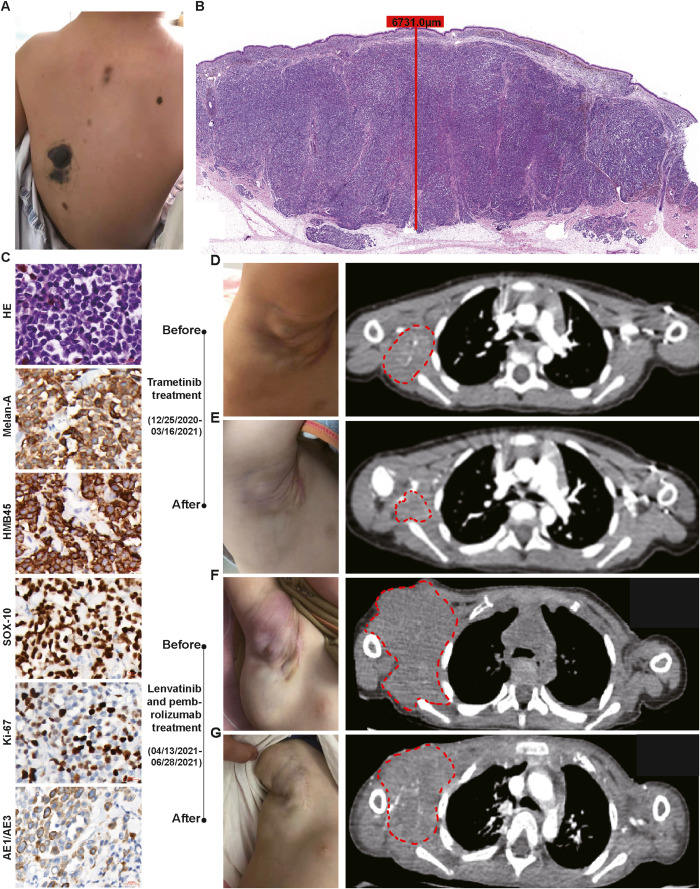
Clinical management of a rare melanoma case arising from congenital melanocytic nevus


Congenital melanocytic nevi (CMNs) are skin lesions characterized by benign melanocytic proliferations and present at birth or shortly thereafter. Large and giant CMNs, with a projected adult size ≥ 20 cm and 40 cm in diameter respectively, are more likely to develop into malignant melanoma. In most cases, melanoma arising from congenital melanocytic nevus (CMN) is particularly aggressive.1 Meanwhile, there are no standard recommended guidelines specific to the treatment of CMN. Due to the extensive tumor size, complete removal of the plague is difficult. Less invasive treatment options are urgently needed. It is estimated that about 80% of CMNs and 95% of giant CMNs carry NRAS-activating mutations.2 However, targeting mutant NRAS is still not feasible. Since NRAS mutations can constitutively activate the mitogen-activated protein kinase (MAPK) pathway and fuel melanocytes proliferation and transformation, targeting MAPK kinase (MEK), the key downstream of the MAPK pathway, becomes a feasible treatment strategy for CMN. Indeed, there have been sporadic reports showing that trametinib, a MEK inhibitor, was effective in patients with mutant NRAS-driven central nervous system melanoma and giant CMNs.2,3 However, whether CMN patient is responsive to MEK inhibitor is still unknown. Here, we report a 2-year-old CMN patient carrying an NRAS-activating mutation with an objective response to trametinib.
